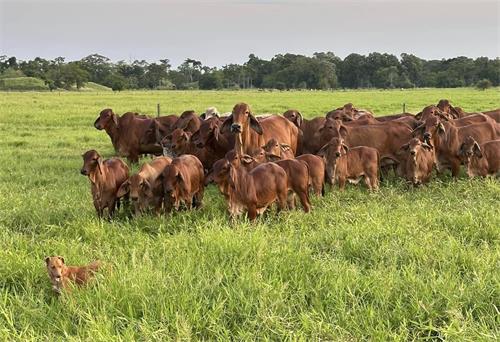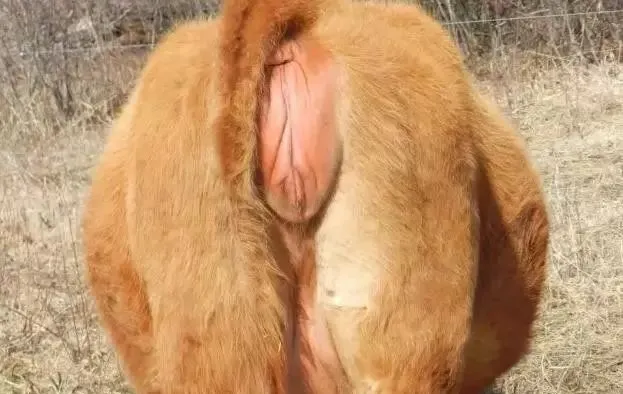Reproductive efficiency is everything when it comes to running a successful dairy operation. Hormonal synchronization protocols like Ovsynch have been widely adopted on farms across North America and Europe because they offer a predictable, timed approach to breeding. But to make the most of these protocols, understanding how cow follicles develop and shift in response to each hormone injection is essential. That’s where things get interesting—and sometimes complicated.
Let’s take a practical look at how follicular waves behave during Ovsynch, why timing is so critical, and how farmers and vets are using real-time ultrasound to monitor ovarian dynamics more effectively than ever before.
The Basics: What Ovsynch Really Does to the Ovary
Ovsynch is a timed artificial insemination (TAI) protocol designed to control follicular development and ovulation. It typically follows a three-injection schedule:
Day 0: GnRH (Gonadotropin-releasing hormone) – Triggers ovulation or luteinization of the dominant follicle.
Day 7: PGF2α (Prostaglandin) – Regresses the corpus luteum if present.
Day 9: Second GnRH – Induces ovulation of the newly grown dominant follicle.
Day 10: Timed insemination – Usually occurs 16–24 hours after the second GnRH.
On paper, it looks clean and systematic. But inside the cow, the ovary is going through a series of dramatic shifts—especially when follicles are in various stages of development.
Follicular Waves: Nature Doesn’t Always Stick to the Schedule
Follicles in cattle grow in “waves.” Each wave includes several small antral follicles, but only one (sometimes two) become dominant. That dominant follicle either ovulates or regresses, depending on the hormonal environment.
Here’s the issue: Not all cows are in the same stage of follicular development when the first GnRH shot is given. Some have a dominant follicle ready to respond. Others don’t. That means the success of the protocol can hinge on where that follicle is in its cycle when you start the program.
In fact, studies from the University of Wisconsin and Cornell show that only about 60–70% of cows ovulate after the first GnRH injection. The rest? They’re out of sync from the very beginning unless the protocol is adjusted.
Using Ultrasound to Monitor Follicular Response
This is where real-time B-mode ultrasonography becomes invaluable. Vets can insert a transrectal probe to visualize the ovaries directly. Within seconds, they can:
Confirm whether a dominant follicle is present.
Check for a corpus luteum (CL).
Track follicle growth across days.
What makes this so powerful is the ability to spot non-responders early—cows that don’t form a CL after the first GnRH or don’t develop a new dominant follicle in response. Without ultrasound, these animals often go undetected until they turn up open weeks later.
The Shift Between the First and Second GnRH: A Critical Window
After the first GnRH, if a dominant follicle is present, it should ovulate within 24–30 hours, allowing a new follicular wave to emerge. Over the next 7 days, one of these new follicles becomes dominant and grows under the influence of endogenous hormones.
By Day 7, when PGF2α is given, the protocol aims to regress the CL that formed following the first ovulation. This removes progesterone’s inhibitory effect, allowing the dominant follicle to fully mature.
Then comes the second GnRH—this is the one that’s meant to force ovulation of the now-ready dominant follicle. But if that follicle isn’t at the right stage of maturity (for example, if it’s too small or already regressing), ovulation may fail.
Using ultrasound to verify the presence of a healthy, dominant follicle before the second GnRH helps catch these issues and improves breeding success rates.
Follicle Size and Timing: Bigger Isn’t Always Better
A common misconception is that a large follicle automatically means it’s ready to ovulate. But research shows the optimal follicle size at the time of the second GnRH is typically between 12–18 mm. Larger follicles, particularly those that persist past Day 7, may become atretic and unresponsive.
Ultrasound imaging gives precise measurements and helps differentiate between active follicles and fluid-filled cysts or atretic structures. This helps fine-tune breeding decisions, especially in high-producing dairy cows that often show altered hormone profiles.
Resynchronization and Repeat Breeding: Learning from the Follicle
Many dairy farms now run back-to-back Ovsynch protocols on cows that fail to conceive after the first round. Without ultrasound, it’s a shot in the dark.
However, when a vet scans on Day 7 or Day 9 and finds a poorly developed follicle or no luteal tissue, they might opt for a modified resynch, such as:
Delaying the second GnRH by 24–48 hours.
Introducing a CIDR device to improve progesterone levels.
Switching to a Double-Ovsynch approach (GnRH 7 days before starting Ovsynch).
These adjustments have been shown to significantly increase pregnancy rates—especially in problem breeders or cows with postpartum reproductive delays.
What Farmers Are Saying: Real-World Observations
Farmers in Wisconsin, Ireland, and New Zealand have shared some practical insights on how follicular shifts during Ovsynch play out in the barn:
"Our highest conception rates came from cows that had a fresh CL on Day 7 and a 14 mm follicle on Day 9."
"Without ultrasound, we had no idea half our second-service cows weren’t even ovulating."
"Once we started scanning every cow on Day 7, we stopped wasting semen on poor responders."
These kinds of experiences show how reproductive technology isn’t just about numbers—it’s about working smarter.
Why Follicle Monitoring is the Future of Fertility Management
Ovsynch is a great protocol when everything lines up perfectly. But when it doesn’t, ultrasound-guided decision-making can help farmers:
Avoid breeding cows that aren’t hormonally ready.
Detect anovulatory conditions early.
Adjust hormone timing based on real-time ovarian feedback.
Improve first-service and repeat-service conception rates.
Combining follicular measurements with other indicators—like milk progesterone levels or activity monitors—offers a complete picture of reproductive health.
Wrapping It Up
Follicle development during Ovsynch is dynamic, and timing is everything. While the protocol provides a helpful framework, real-world physiology doesn’t always follow the textbook. Cows respond differently, and missing just one key shift—like a non-ovulating follicle or delayed CL formation—can throw the whole schedule off.
Ultrasound has become the bridge between textbook theory and real-time physiology. It gives farmers and vets the power to make better decisions—cow by cow, follicle by follicle.
With reproductive efficiency tied so closely to profitability, there’s really no room for guessing anymore. And thanks to better tools and deeper understanding, the future of herd fertility management looks more precise than ever.









